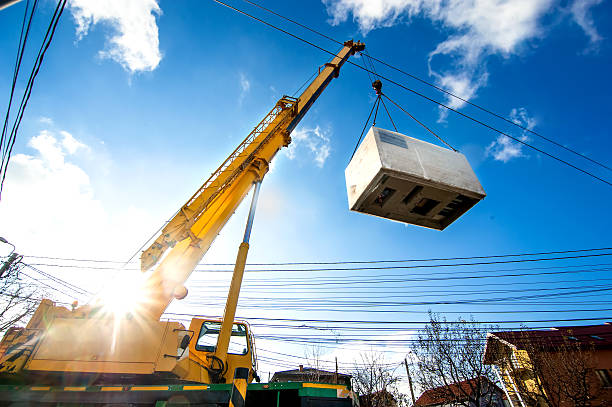Technology keeps evolving, and life keeps getting easier. Imagine how stressful it is to manually move a heavy load from one place to another. However, with the invention of the jib crane, carrying a large load has become much more manageable. There are different types of jib cranes, but we’ll be discussing floor-mounted jib cranes and how they work. Meanwhile, let us explain the concept of jib cranes.
What are Jib Cranes?
Jib cranes are machines that help people move big things around a workshop, building safely. The mast and the boom are the two primary components of a jib crane. We’ll attach the crane’s mast to a solid surface, like a floor or wall, ensuring that it sustains itself and the object’s weight.
The mast is like the support to which we’ll attach the rest of the crane. Jib cranes are very flexible and are helpful in overhead bridge cranes to boost productivity. They are usually effortless to build, but they can hold up to 15 tons in some cases.
In a manufacturing setting, their design is essential. The reason is that it can help workers be more productive and reduce workplace injuries.
There are three main types of jib cranes; the floor-mounted type, the fixed wall-mounted type, and the traveling wall-mounted type. However, our primary focus is the floor-mounted jib crane type.
Floor-Mounted Jib Cranes
The floor mounted jib crane is the most popular. It is a self-supporting crane with a vertical mast set on a concrete foundation. The work of these cranes is to distribute the load of more giant cranes. Also, they can rotate in 360 degrees, and we can control them manually.
The most popular type of floor-mounted crane is a free-standing floor-mounted jib crane. This crane type is built to stand alone in the middle of your manufacturing floor without the need for reinforcement.
There are different types of free-standing jib cranes available. The arm lengths range from 3-6m, and capacities range from 80-500kg for a safe working load. Thus, it indicates many free-standing cranes for different lifting applications.
Every jib arm has a built-in push travel trolley that can easily accept a hoist or vacuum lifter. So, it’s necessary to consider your hoist requirements after determining the actual arm length for your jib crane.
Ensure that your hoist capacity matches your crane’s capacity, then determine how much lift you need. Further, decide whether you’ll need to power your hoist electronically. After all these, you can buy your free-standing jib crane.
How Does a Floor-Mounted Crane Work?
A floor-mounted jib crane will always revolve and lift or support a load. However, most floor-mounted jib cranes will additionally feature a traverse motion. As the jib spins, the load will be able to traverse the cantilever from the circle center to the edge generated by the jib.
Floor-mounted jib cranes usually have a transverse motion and hand-powered rotation. But the electric-powered or hand-powered lift motion is more popular.
The hand-powered rotation and traverse motions work through push or pull. Meanwhile, hand-powered lifting works through a chain like a non-powered garage door.
For individuals looking to buy a floor-mounted jib crane, you’ll find the electric rotation and traverse motion in almost all of them.
How Do We Install a Floor-mounted Jib Crane to the Floor?
A floor-mounted jib crane can be fixed to the floor or wall with anchors. You can order anchors for a floor-mounted jib crane or buy them from a nearby bolt or supply store. After buying, attach them to a solid concrete footing for the floor-mounted crane to work well.
However, we can’t anchor most floor-mounted jib cranes to a reinforced concrete floor with bolts alone. If you try it, people will get injured, and floors and cranes will buckle. The reason is that there is a high chance that the jib crane will fail.
So, if you’re not sure how to install the floor-mounted jib crane, call specialists or check the manual. In the manual, you’ll get all the answers you seek. Installing a floor-mounted jib crane is simple if you can follow the instructions in the manual.
Reasons Why the Tranverse Motion and Rotation Motion Are Not Powered
A floor-mounted jib crane’s electric hoist motion is widespread. But, powered rotary and traversal motions are uncommon. As cheap lifting equipment for tiny workshops, the floor-mounted jib crane lifts parts and bolts them onto bigger components. fubarnews
The overhead crane then moves the completed item to the next workstation. In other words, the overhead crane works for movement of about ten feet. Most times, floor-mounted jib crane customers believe that the user can push the weight to nearby equipment.
Conclusion
Floor-mounted jib cranes are light, with limited headroom. Installing a floor-mounted jib crane or any jib crane can increase output and improve workplace safety in your operation. They are ideal for high-volume lifts and provide a comfortable way of moving material quickly and safely.







